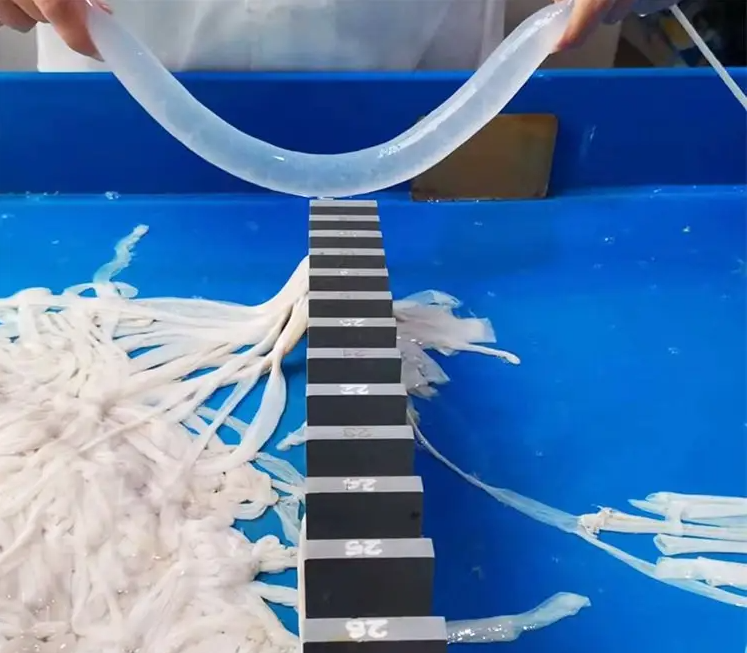How Are Casings Produced?

How are casings actually made? Is it simply a matter of scraping out the intestines? The answer is no. The process involves multiple steps. Let's take a closer look:
The intestinal wall, from the inside out, consists of four layers: the mucosa, submucosa, muscularis, and serosa.
When producing salted casings from pigs or sheep, only the submucosa is retained; the other three layers are scraped off.
For dried casings from pigs or sheep, part of the mucosa is retained along with the submucosa.
For salted or dried casings from cattle, only the mucosa is removed, while the other three layers are preserved.
The production process for salted casings is generally as follows:
First, fresh intestines are cleaned and soaked for 18-24 hours before being scraped. They are then rinsed thoroughly, inspected by filling them with water, and any damaged or holed sections are cut out. Next, the intestines are bundled into hanks of 5 or 10 tubes each (with a total length of about 90 meters) and salted with approximately 0.5 kilograms of refined salt for 24 hours, resulting in the semi-finished product known as "light casings." These "light casings" undergo further processing—including rinsing, inspection, trimming, re-salting, and draining—to become the finished product.
The process for dried casings is somewhat similar:
After scraping, about 70-80 tubes are treated with 2.5 liters of a 5% sodium hydroxide solution, stirred evenly to remove fat. Following rinsing, they are salted using 0.8-1.0 kilograms of refined salt per 100 meters for 12-24 hours. Subsequently, the salt is washed off, the casings are air-dried, flattened, and then bundled and packed in boxes for sale.
High-quality pig casings are characterized by their thinness, toughness, and uniform transparency (whereas sheep casings are valued for being thicker). Salted casings appear light red, white, or milky white. Dried casings are typically pale yellow. All types should possess a characteristic, mild aroma.
The casing manufacturing process is quite complex. Through multiple stages of quality control, the processed casings meet the necessary requirements for storage and distribution.
上一篇:How to Properly Store Casing?
下一篇:Reasons for the Loss of Nutritional Value in 4 Common Casing Types
